- Home >
- Our Actions >
- Ambassador report
9
Comments
World Wetlands Day 2017 |
|---|
|
Happy World Wetlands Day to everyone who works to protect global wetlands. Wetlands are the link between land and water, and are some of the most productive ecosystems in the world. Some common names for different types of wetlands are swamp, marsh and bog. To be called a wetland, an area must be filled or soaked with water at least part of the year.As wetlands are continuously threatened by human activities, this is a day to spread awareness on the importance of wetlands and call on more people to join hands in protecting wetlands. In Ghana, we are loosing our wetlands (especially, Mangrove wetlands) at an alarming rate despite the many projects carried out by conservation groups. During 2015 World Environmental Day, I coordinated the Ghana Youth Climate Coalition to join a tree planting exercise at the Muni-Pomadze Ramsar site in Winneba – which is globally known for wetland Turtle conservation. It was sad to see plastics all around a ramsar site which accommodates over 130 species of organisms. In other places across the country, mangroves at some wetlands are being harvested for fish smoking. Interaction with fishmongers reveals that smoking fish with the mangrove gives the fish a better taste. This act has led to the loss of mangrove vegetation in the Central Region, and parts of the Volta Region. At the Kakum estuary in Cape Coast, which is surround by a mangrove wetland, it is heartbreaking to witness the frequency and speed at which people are encroaching the wetlands. People are erecting buildings so close to the wetlands and some sitting right on the wetlands. This has contributed to a chronic flooding events within some parts of the Cape Coast metropolis. The Kakum estuary alone contains over eighteen species belonging to 18 genera and 12 families of marine, brackish water and freshwater fishes. If the wetland surrounding the estuary is threatened so is the estuary. Additionally, as a very sensitive ecosystem, it is disturbing to find people practicing open defecation and throwing refuse (mainly plastics) in an around the wetland.
Why protect Wetlands?
There are many more benefits of wetland that cannot be mentioned. The frequent flood events in most coastal cities in Ghana can be attributed to destruction of wetlands. As we celebrate Wetlands today, I call on all global citizens to advocate for the protection of wetlands. |
 |
|
|










 Previous : UAE Food Safety Rating Rises a...
Previous : UAE Food Safety Rating Rises a...


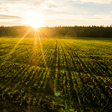
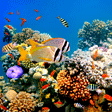
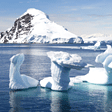
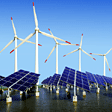

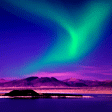

9 Comments
Heonjun Park, thank you. I keep updating my website to motivate other young people to do great things for mother Earth.
Posted 23-02-2017 18:53
Hi Joshua, while doing my googling to find out whether there had been a copy right infringement, I came across your fancy website! Snowballing the events right? I hope you have a big success with that organization :D
Posted 17-02-2017 02:40
Degradation of wetland and its boidiversity is a major problem in Nepal too. The government is lacking efforts to protect and promote them.
Posted 11-02-2017 12:46
Thanks for the feedback, everyone.
Posted 10-02-2017 21:08
happy world wetlands day to you too tho its belated ) thanks for sharing
Posted 09-02-2017 17:52
i like this article...
Posted 06-02-2017 19:48
Happy World Wetlands Day to you too. Thanks for highlighting the day, significance of wetlands and the latest trends.
Posted 06-02-2017 01:41
read somewhwre
The Ramsar Convention definition of wetlands includes lakes, rivers, underground aquifers, swamps, marshes, peatlands, deltas, tidal flats, mangroves, coastal areas, coral reefs, and manmade ponds, reservoirs, salt pans, etc. Wetlands provide globally significant social, economic and environmental benefits. Important wetland functions include water storage, groundwater recharge, storm protection, flood mitigation, shoreline stabilization, erosion control, and retention of carbon, nutrients, sediments and pollutants (Dugan 1990). Wetlands also produce goods that have a significant economic value such as clean water, fisheries, timber, peat, wildlife resources and tourism opportunities.
Wetlands sustain lives and are among the most diverse ecosystems and supply all our fresh water. Yet wetlands around the world continue to be degraded and converted for development needs leading to the disappearance of least 64% of wetlands around the world since 1900. Wetlands hold significant carbon stores and their conservation is a vital part of climate change mitigation strategies. Recent scientific advances have demonstrated that coastal wetlands are incredible long-term carbon sinks, storing carbon in the plants and in the soils below for hundreds to thousands of years.
Human interventions lead to degradation of wetlands and aggravate the impacts of natural disasters for example, building canals and reducing drainage worsens flash flood conditions by reducing the natural floodplain sponge effect. Similarly, replacing mangroves with fisheries and salt pans removes the natural coastline buffer and increases carbon emissions. The burning of peatlands is also connected to massive emissions of carbon dioxide into the atmosphere. Wetlands are often drained for agriculture leading to the removal of the natural sink to prevent flooding.
The United Nations estimates that 90% of all natural hazards are water-related and as per the Intergovernmental Panel on Climate Change, such incidents are set to increase. In less than four decades, the frequency of disasters has more than doubled across the globe, mostly driven by climate change. Nearly one and a half million people were killed in natural disasters in the last decade alone, with 90% of casualties concentrated in the low and middle income countries.
Wetlands act as a natural protective buffer along the coastline and are a natural sink for excess rainfall in inland areas, thereby reducing flooding. Healthy wetlands can absorb some of the impacts of extreme weather events, cushioning the damage in local communities the wetland ecosystem helped speed up the recovery process after the 1999 cyclone in Odisha, acting as natural water filters and nutrient restorers. The natural release of stored water during the dry season delays the onset of droughts and water shortages. Salt-water tolerant mangroves have strong roots and considerably blunt the impact of cyclones and tsunamis. Mangroves also store carbon dioxide, helping to fight climate change. Similarly, floodplains and peatlands play an important role in mitigating effects of climate change and provide a safe haven to millions of birds and animals.
Wetlands are also vital for communities to be resilient designated protected wetland areas have been used to strengthen nature??s own buffer. The IUCN is working with local communities in Senegal to restore degraded wetlands and to encourage sustainable agriculture, tourism and fishing practices. Scientists worldwide are looking at the ecological and hydrological impacts resulting from climate change. Wetlands are vulnerable to climate change with variability in responses and human interventions for restoration dependent on habitat. Local communities and indigenous people understand the role of our wetland in disaster risk reduction. Therefore, harnessing the traditional knowledge of these communities can contribute
Posted 05-02-2017 23:46
2 February my colleagues from the university participated in the meeting of the Coordinating Council on the conservation, sustainable use and restoration of wetlands. Article here - http://www.mdpu.org.ua/new/novosti-universiteta/3176-2017-02-03-17-40-34.html
Posted 05-02-2017 23:07